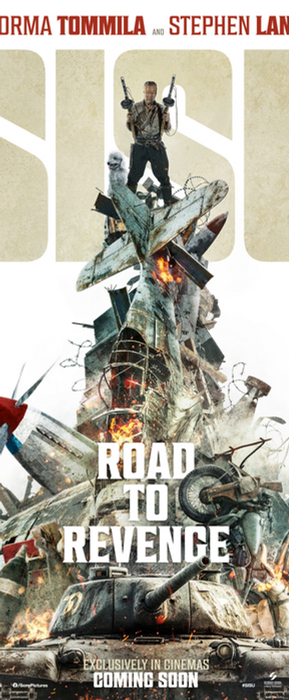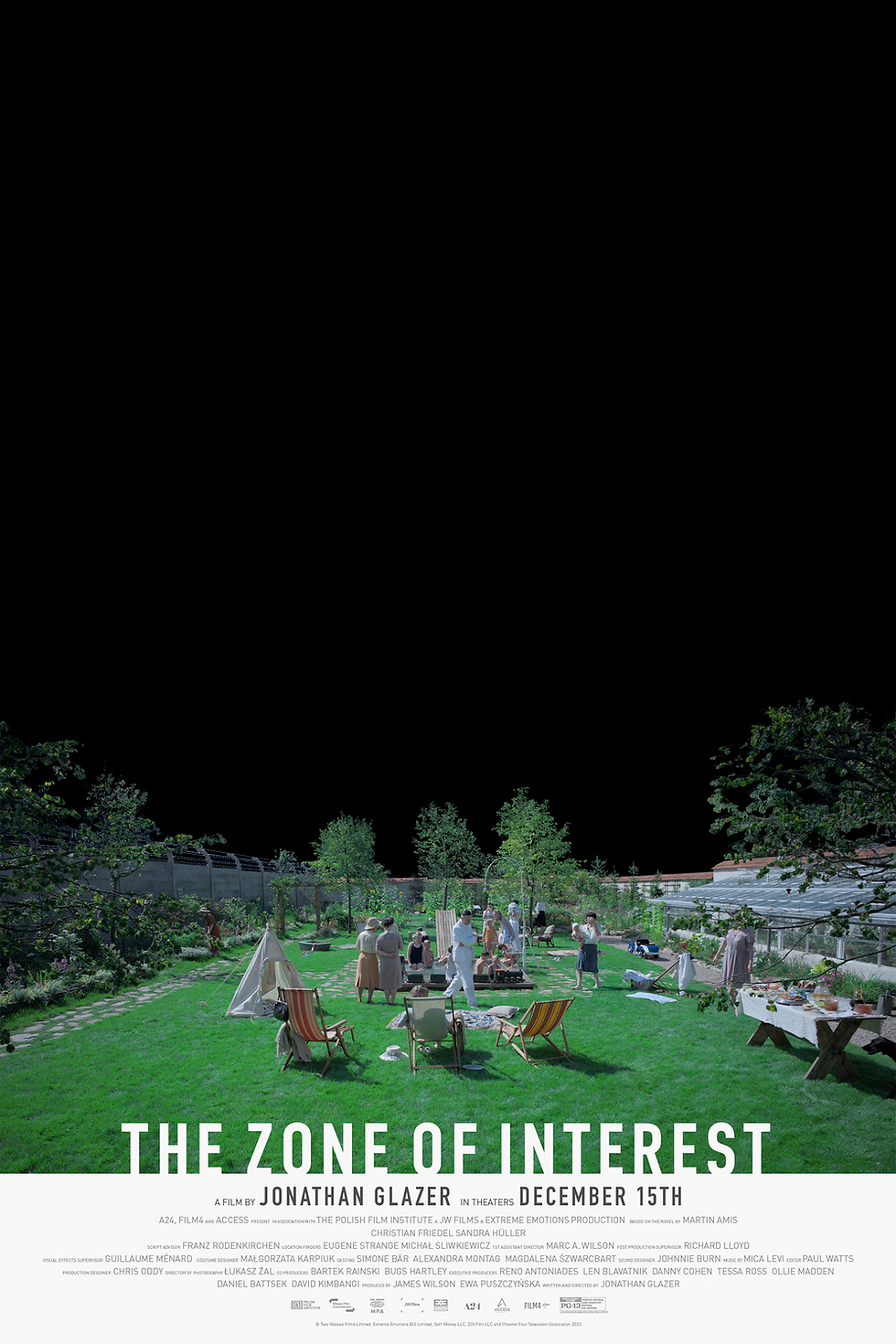The Zone of Interest
- Feb 18, 2024
- 5 min read
Updated: Mar 9, 2024
The opening moments of THE ZONE OF INTEREST make clear that the film is going to provoke discomfort.
An ash gray screen reveals the film's title as Mica Levi's discordant music crawls its way under your skin and assaults your ears. For what must be two minutes, the screen goes dark and the aural assault ramps up, an overture of pain.
Then the film opens on a pastoral scene of a family, clad in white, lounging by the side of a beautiful river. Nearly dialogue-free, we watch the family picnic and them enjoy the water before eventually boarding two cars to return home.
They settle in for the night, with the father walking room to room to shut off the lights. As day breaks, we see that the two story home is located on beautiful grounds, behind which sits the enormous Auschwitz Concentration Camp, its high walls and barbed wire not containing the loud voices, occasional screams and frequent gunshots from within.
The father is Auschwitz commandant Rudolf Höss (Christian Friedel). We watch as he benignly gets ready for work, then mounts a horse outside their nearly literal white picket fence and rides the less than 25 yards to the front gates of Auschwitz.
His wife Hedwig (played by Sandra Huller, so brilliant in this year's "Anatomy of a Fall") manages the Höss home with efficiency, an ever circling group of young women who are Polish captives obeying her every word.
Writer/Director Jonathan Glazer, Oscar nominated for both best screenplay and Director here, creates a challenging piece that may appear to be benign, almost placid on the surface. The Höss family seems almost blissfully unaware of their role in the wholesale extermination of an entire race.
Unlike Spielberg's brilliant "Schindler's List" which detailed every aspect of the unbearable terrors within those high walls (I admire that film greatly, but have never been able to watch it again after seeing it opening night on the big screen), Glazer tortures you with what is unseen.
Hedwig receives bags at her back door and goes through them, choosing a fur coat stolen from the Jewish people upon their arrival at the camp. She spreads other items out across the dining room table and tells all the girls working for her that they can choose one item each to keep. The older Hoss boy looks at horrifying relics of the camp with a flashlight under the sheets the way most would steal glances at comic books.
Rudolf takes meetings in which mass oven designers describe how they can move more people through the mass crematoriums faster, quicker and more efficiently. Death is discussed in terms of production.
The Hoss children seem mostly unbothered by the noises over the wall.
But those noises.
An almost nonstop humming, churning noise permeates the background of every scene as huge smokestacks burn day and night. Gunshots, always single shots, pop hundreds of times during the film, usually distant but always there. Screams, shouts, terrified voices are raised. Always out of sight, but no less disturbing.
Glazer then fills some of the quieter moments with disturbing imagery. One of the most brilliantly staged shots in the film features the Höss family and their guests at a garden party in the lush green backyard with a pool, elegant tables set out. As the camera pulls back and slightly up, you hear a train approaching Auschwitz and the smoke stack, just out of visibility behind their greenhouse and the camp walls pours a long line of billowing smoke into view.
The trains don't stop coming. You hear them arriving day and night.
In my mind, I kept thinking about how many Jewish people were on each of those trains. How many trains a day? (1.1 million Jews were murdered at Auschwitz alone.)
In one scene in the middle of the night, the children's bedroom is lit up a bright red as fireballs emerge from the smokestacks.
Glazer also drops in several nighttime sequences that are shot with infrared cameras as a young woman leaves apples all around the camp, hiding them for prisoners. The night vision camera highlights the girl against the blackness of night in the same way that Spielberg's little girl in the red dress served as the only color in his masterpiece. It's jarring, even more so when Levi's music score invades loudly, swirling around your head to disorient you further.
Tarn Willers and Johnnie Burn are nominated for an Oscar this year for best Sound Design and I think they should win. I admire what the sound designers did on some of my favorite films of the year like "Mission Impossible: Dead Reckoning", they are fantastic. But what Willers and Burn create in THE ZONE OF INTEREST is another world that never lets you relax, ignore or feel comfort. Their work is nothing short of brilliant & unexpected.
Friedel is very good as Rudolf. It's the opposite of Ralph Fiennes incredible portrayal of Amon Goeth in "Schindler's List", where Fiennes was an unhinged madman who unleashed horrors at the snap of his fingers for three hours, Friedel's Rudolf is a family man trying to keep his wife and children happy at home while he blithely oversees mass genocide at work. He's a monster, the true vision of which only comes to true light during a phone conversation with his wife after a meeting in a stunning opera house.
Similarly, Huller is a contained beast as Hedwig, with her true nature only revealing itself in several comments to the Polish girls working in her home.
We left the theater in kind of a quandary, as did the surprisingly large audience we saw it with yesterday. Walking out in silence, we started talking in the lobby about the film. It took a solid 12 hours before we could start to wrap our mind around the experience. And that's probably the best description of what the film is. An experience designed to discomfort, to provoke thought and force consideration of one of the darkest chapters of humanity.
I felt like a comment I read from Glazer last night helped me "unlock" his film. He said that "THE ZONE OF INTEREST is actually two films, the one you see and the one you hear".
If you've seen it, that makes total sense. Especially when you think about his visual choices in some of the most aurally disturbing moments.
That startling flash-forward near the end of the film also challenges.
As it should.
Powerful and disturbing, THE ZONE OF INTEREST is not meant to entertain.
Glazer's two films on display, what you see and what you hear, are both challenging in their own unique way. Together, they are a nightmare that haunts long after the lights come up, earning a respectful A.
(In German, English subtitles)














Comments